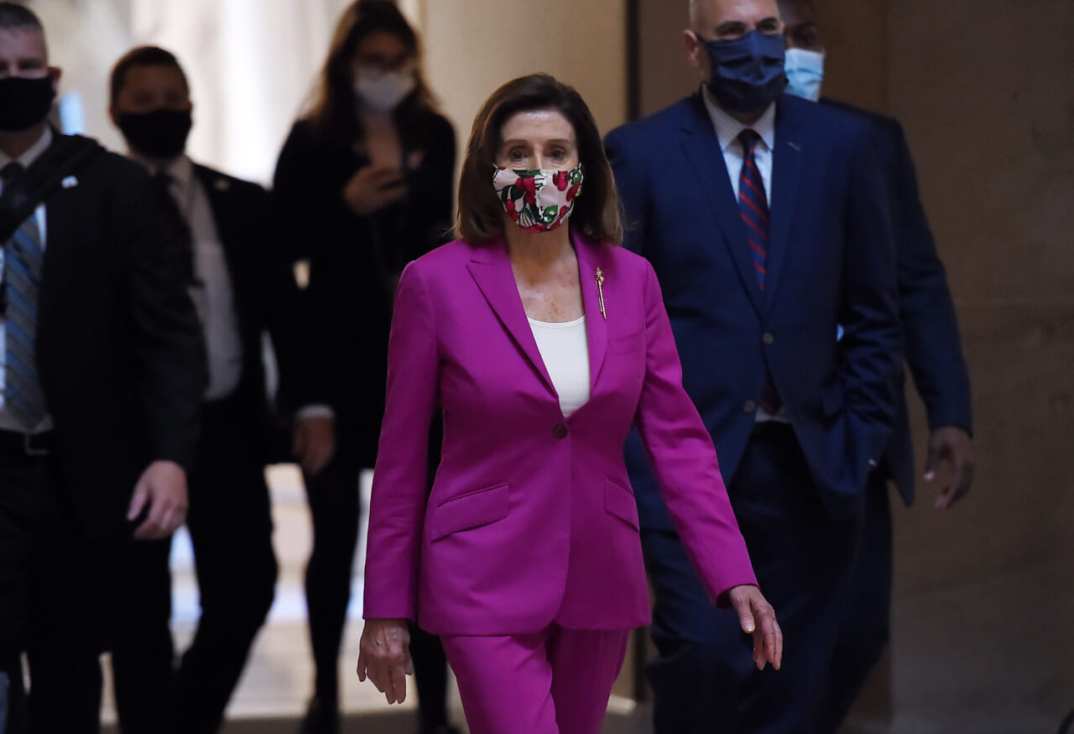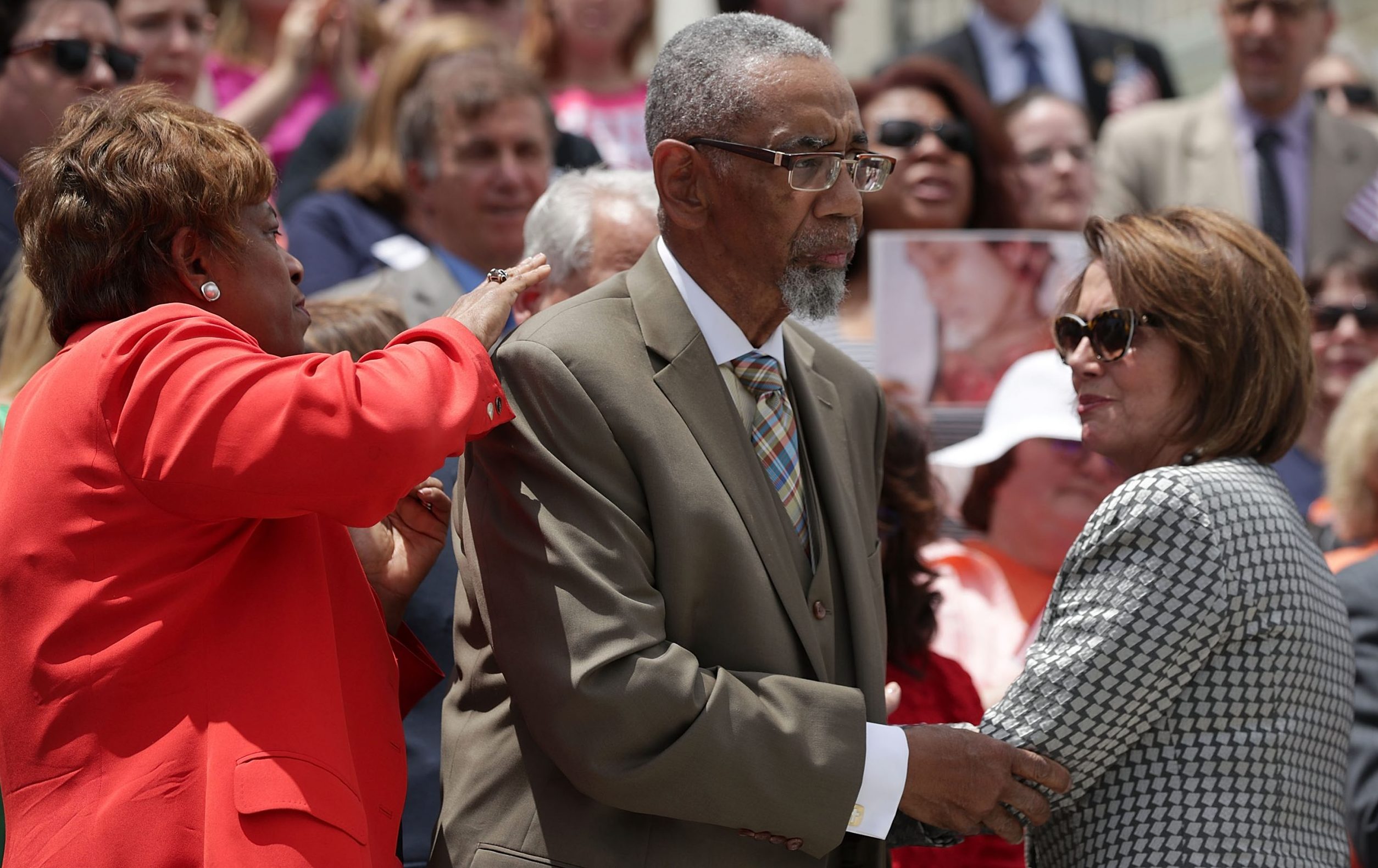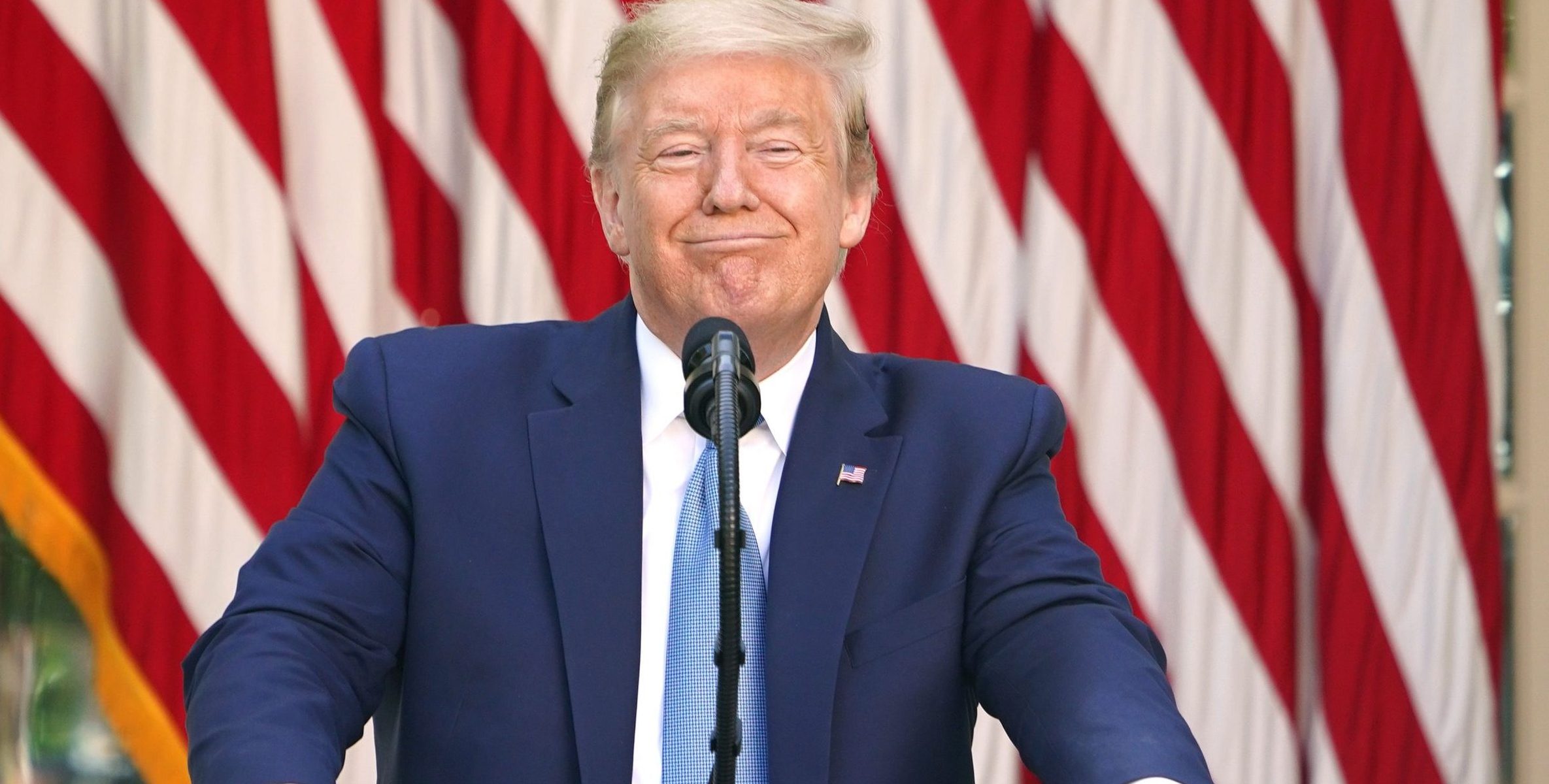No, COVID-19 TRACE Act doesn’t remove people from their homes
Conspiracy theories have been repeatedly pushed by right-wing platforms since the House bill was introduced by Rep. Bobby Rush on May 1

Legislation proposed by House Democrats that would provide billions of dollars toward mobile testing for COVID-19, has in recent weeks led to online conspiracy theories
that the bill authorizes the government to enter the homes of citizens and forcibly remove them if they test positive.
Not only would doing so violate the constitutional rights of Americans, but it’s categorically false.
The bipartisan bill known as the COVID-19 Testing, Reaching and Contacting Everyone (TRACE) Act was introduced by Illinois Rep. Bobby Rush on May 1 and has been co-sponsored by over 60 other House members.
READ MORE: Maxine Waters gets real about COVID-19, reveals she lost sister to virus

U.S. Rep. Bobby Rush (D-IL) (C), whose son was a gun violence victim, is comforted by House Minority Leader Rep. Nancy Pelosi (D-CA) (R) and Rep. Brenda Lawrence (D-MI) (L) after he spoke during a news conference on gun control June 22, 2016 on Capitol Hill in Washington, DC. (Photo by Alex Wong/Getty Images)
The TRACE Act, also known as HR6666, would establish a $100 billion grant program for local organizations to hire, train, and pay individuals to run mobile testing units and conduct door-to-door outreach. These testing measures would especially focus on medically underserved communities and hot spots where the novel coronavirus is most felt across the country.
In addition to the current system in which people are being tested for COVID-19 at hospitals, the new legislation would allow citizens to be tested at more accessible locations such as high schools and universities, academic medical centers, federally-qualified health centers and any other entity deemed eligible by the CDC.
One aspect of the bill that has been misinterpreted online is that the TRACE Act would also allow people to be tested in their residence. If tested positive, individuals would be encouraged to self-quarantine at their residences and maintain social distancing.
After the TRACE Act was introduced, online conspiracy theories were heavily pushed by right-wing platforms and eventually made their way to social media sites like Facebook, Instagram and Twitter. The conspiracies falsely claimed that the bill would give the federal government the authority to enter residences without consent and remove those who test positive for COVID-19 and force them into quarantine.
The bill (which is available here) and a fact sheet were provided to theGrio by the office of the U.S. House of Representatives. The fact sheet specifically debunks the recent conspiracies.
“Not everyone has the ability to visit drive-thru testing sites, and many others are unable to leave their homes to get tested for any number of reasons,” the fact sheet reads. “This bill would allow the testers to come to you through mobile testing units and door-to-door outreach, as is safe and necessary, from members of your own community. However, if you don’t want to be tested for coronavirus, you won’t don’t have to be — but you should.”
The false claims have also been debunked by the Associated Press, Reuters, and the fact-checking website Snopes.
The conspiracy that a bill providing greater access to testing and more contact tracing of the virus would somehow lead to a state-controlled dystopia comes as conservatives, Republican leaders, and President Donald Trump continue to push political talking points that downplay the risk of COVID-19 in an effort to bolster arguments to open back up the economy.

US President Donald Trump speaks during a “Presidential Recognition Ceremony” in the Rose Garden of the White House in Washington, DC on May 15, 2020. (Photo by MANDEL NGAN / AFP)
READ MORE: Obama calls out Trump’s response to pandemic: ‘Chaotic disaster’
In fact, on Thursday, the president suggested that people not get tested to apparently reduce the number of infection cases. “Don’t forget, we have more cases than anybody in the world. But why? Because we do more testing,” Trump said. “When you test, you have a case. When you test, you find something is wrong with people. If we didn’t do any testing, we would have very few cases. They [the media] don’t want to write that.”
That theory, of course, would not stop the virus from spreading but would rather see the virus continue to silently do its damage — particularly in the most vulnerable communities which are mostly Black and Brown.
As Vox reports:
More testing helps public health experts and policymakers understand the full scope of the problem, isolate those who have tested positive, and then trace their contacts to help contain potential outbreaks. But for Trump, the downside is it undercuts his argument that it’s already safe for states to lift stay-at-home orders that are hurting the economy and therefore hurting his reelection hopes.
What’s more, predominantly white, affluent communities are being tested more frequently, despite the fact that low-income and minority communities are being infected and dying at higher rates. Considering this data backdrop, providing more testing to these communities would literally save lives.
“I’ve seen these alarming posts as well, but I can assure you that they are completely false,” Rep. Rush, the bill’s sponsor, said on his website. “This bill does not authorize anyone to enter your home, for whatever reason, without your permission, nor does it allow the government to remove anyone from your home because of the coronavirus.”
The TRACE Act is currently in the House Committee on Energy and Commerce. If approved in that committee it will then move forward to the House calendar to be voted on, debated or amended.
